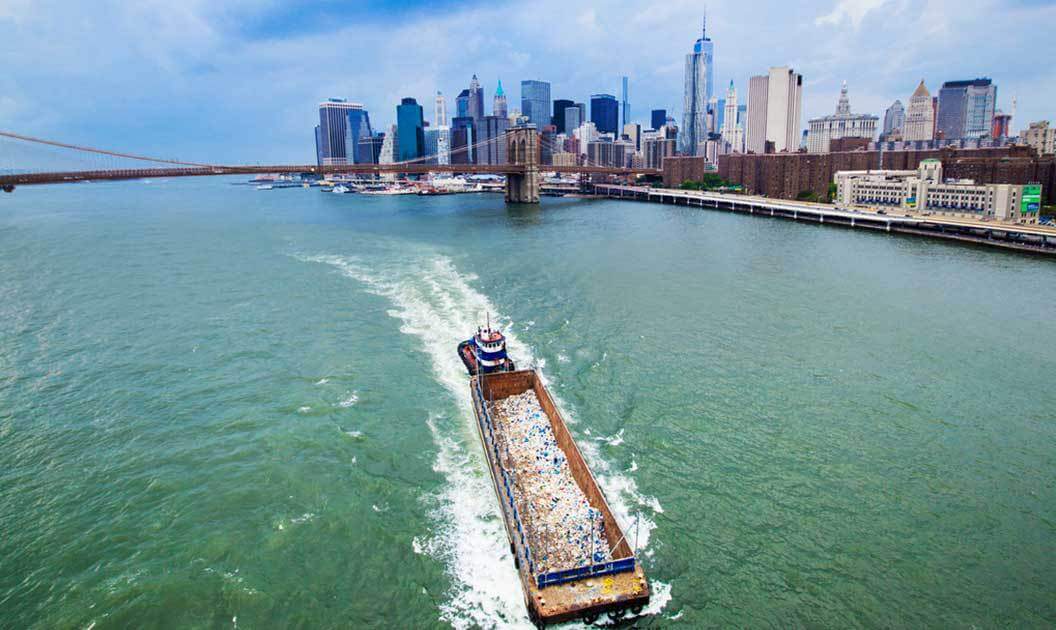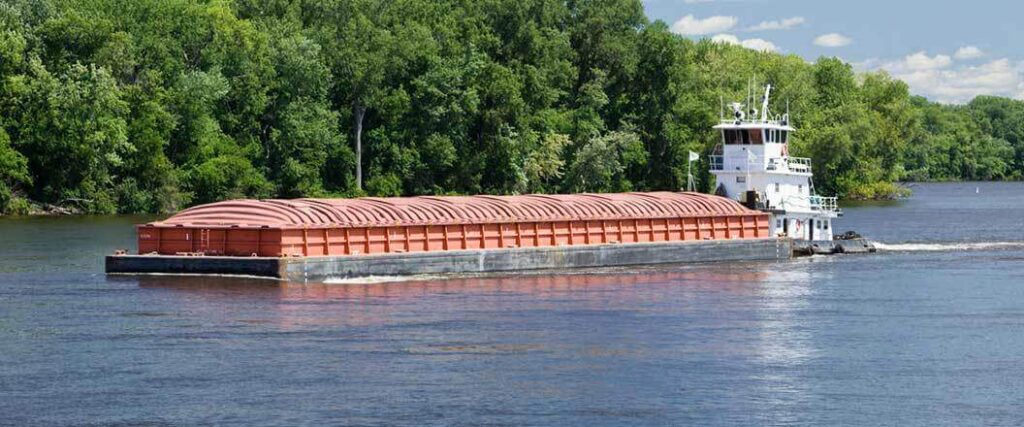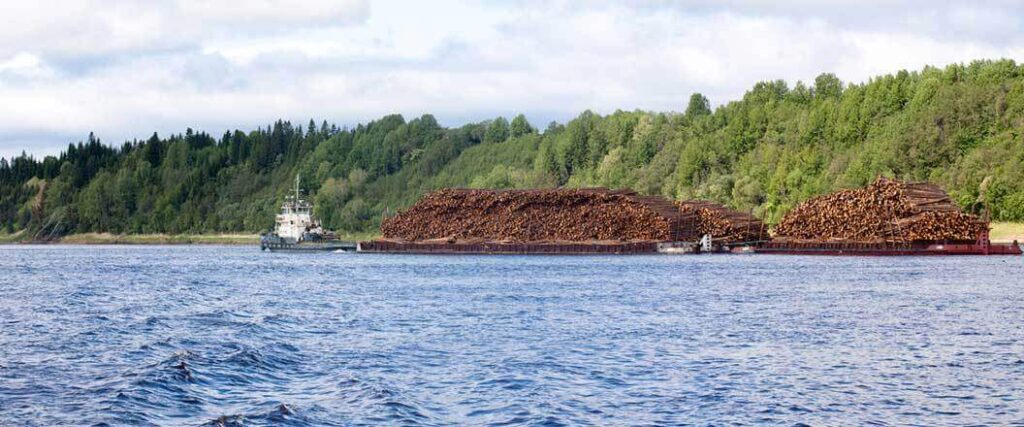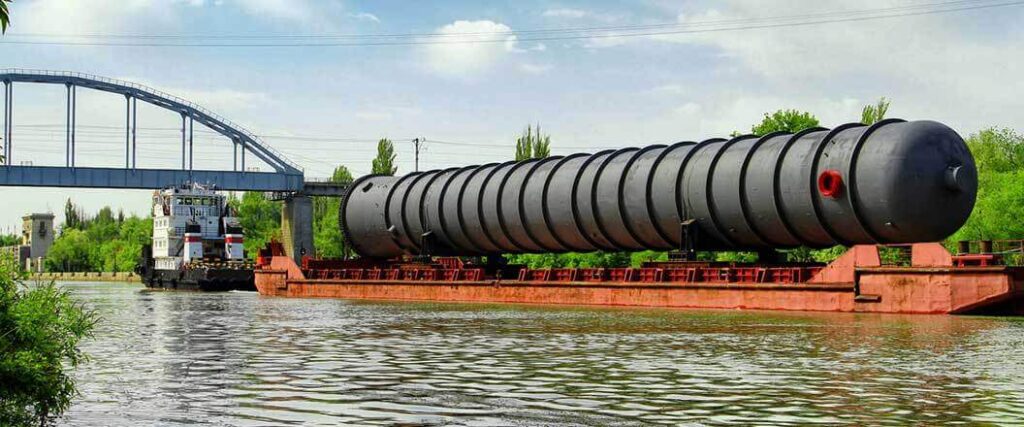
Barge transport is one of the best-kept secrets in shipping. Whether your goods arrive by vessel, rail, air, or ground, your international or domestic cargo may call for the use of barge shipping.
Barge transport services in Europe fall under United Nations Convention on the Law of the Sea (UNCLOS), which sets and defines the territorial boundaries of Europe’s shipping lanes. This UNCLOS also defines the rules and regulations of a ship’s registry along with assessing rules and regulations during the time of shipping.
When shipping freight internationally or domestically, a barge is one option that is available for transporting goods in mass. Find out how barge transportation can benefit your shipment.
Barge transports ferry cargo from one location to another, internationally and domestically. It is one method for shipping large quantities of goods on a single trip. Barges are not self-powered shipping vessels in almost every case. They generally require the power of another vessel to operate.
Barges are typically seen being pushed down rivers or pulled by tugs across the world’s coastal regions. The real benefit or reason for using barge transportation is due to the amount of cargo they can transport that is relative to their size and power consumption.
Examples of high-volume transport for land and water.
Barge transportation regulations are country-specific. Check with the regulating department or agency of the country you are operating in at the time of shipping. Remember, barges can travel along rivers, lakes, and the coastal regions of the ocean in a limited capacity.
If you are transporting goods with the use of a barge, take care to seek out the rules and regulations of any relevant department or agency. Depending on what part of the world you are doing business in, there will be variances in the rules.
The European Union, in conjunction with the United Nations and other regulatory bodies, has drawn up legislation for the rules and regulations of barge maritime commerce.
Some examples of various European governing bodies that deal with barge transportation
Ocean vessel freight forwarding can get your cargo across the sea, but it is going to take barge transportation to move those incredible loads to destinations that ocean vessels cannot reach. You will need an expert to line it all up since barge transports are not as common or readily available.
Always check with a freight forwarding specialist to go over any particulars that pertain to your shipment. Freight forwarders can assist with imports or exports, so avoid the red tape at all costs, as it can prove costly and result in delays for your shipments.

One of the most common forms of large-volume transportation in other parts of the world is inland barge river transportation. This method of transportation isn’t as standard as, ocean vessel transportation, but it has a long functioning history.
If you are moving goods internationally, you may require the use of a barge. Let’s say you are shipping goods to Austria. Well, your shipment does not stop at a German port; your goods need to be transferred to other means of transportation to make its way inland.
Your options for inland transference rest in truck, rail, air, or barge. A barge traveling down the Elbe River can reach an Austrian destination while ferrying a large number of goods. There is a distinct saving to the shipper when using barge transports over other transport options.
So you see, your goods may require an additional step in the process for a complete international shipment. Barge transport is a fantastic option as far as cost to the shipper and reliability.
There are different types of barges along with tugboats that push or pull barges. Every kind of barge brings other possibilities for transporting heavy or large loads across coastal oceans and river systems.
Some examples of the different types of barges available for shipping your cargo.
Some sizes of different barges are available for ferrying your freight.
The island transportation of cargo through Europe has been a staple for moving high volumes of goods for many years. The vast interconnected waterways and canals of Europe offer a means of transference for goods arriving at large European coastal ports.
In Europe, the concept of barges that are tugged or pulled is being phased out. In the modern era of logistical transportation, both pushed and even self-propelled barges are becoming more common.
The acquisition of barge transportation is based on general availability and commodity type. In most cases, barges for international shipments depend primarily on the commodity and availability at the time of shipping.
This type of shipping method is more specialized than, let’s say, a vessel or truckload. Acquiring and booking a barge takes the skill of a professional. Fortunately, a freight forwarding specialist can assist you with maximizing your shipping potential with this monumental option of transportation.

So what do barges transport exactly? This is a good question to ask, especially if you are a shipper in the business of transporting goods to countries far from a coastal port. Knowing the types of commodities shipped using barges can be a great help.
Barges are known for transporting all manner of goods, especially loose bulk goods like sand, grain, and liquids. This ability to transport more than just containers in large volumes gives barge transportation the flexibility needed to be one of the best options for cargo transportation.
Examples of goods transported on barges
Again, using Europe as an example, inland waterway transport has historically been a desired method of shipping for many years. In prior years there has been a decline in barge transport services. However, recently there has been a surge in barge transportation renewing its popularity.
| Year | Tonne-Kilometre (TKM) |
| 2015 | 147 Billion |
| 2016 | 147 Billion |
| 2017 | 147 Billion |
| 2018 | 131 Billion |
| 2019 | 140 Billion |
| 2020 | 131 Billion |
| 2021 | 136 Billion |
The unit of measurement used for this chart is representative to the weight of one ton of goods being transported over the measured distance of one kilometer. Every country in the world uses the metric system except the United States (U.S.), Liberia, and Burma who use the imperial system.
Here is an example of how to understand the data set
Metric System: Measurements are done in grams, meters, and liters to measure volume, distance, and weight in 97% of the world.
Imperial System: Measurements are done in inches, feet, ounces, and pounds to measure distance, volume, and weight in the U.S.
There are massive technological advancements which impact logistics every year. These advancements tend to always have an effect on carrying capacity, fuel economy, and environmental impact.
Barge transportation is no different than other forms of transportation when it comes to advancements. In Europe, the world’s first self-propelled, electrically powered barge is about to change the game completely.
This barge has an incredible load capacity, has zero emissions, and doesn’t require a crew. These features contribute to a safer environment while being environmentally friendly and cutting overall costs.

Barge loading and unloading are critically important to execute properly. Therefore it is essential to use the right tools and methods to ensure that both loading and unloading can be successfully completed.
Depending on the cargo, barges use different tools like cranes, winches, pulleys, ramps, pipes, and other forms of conveyance. These tools are necessary for loading and unloading cargo safely and efficiently.
As you can see in the video, loading, and unloading is a process that requires both time and also by-the-book execution. An entire team of workers is required to ensure safe loading, handling, and unloading.
Traditionally, there are two methods for loading and unloading a barge at a foreign port:
In any event, the transference of cargo, whether to or from a barge, is done with speed, efficiency, and safety in mind. Cargo on a barge is stacked and lined up forward all the way to the rear of the barge.
Another thing to consider during the loading process is something commonly referred to as impact loading. This means the faster cargo is loaded, the more stress and kinetic energy is built up, and it puts a strain on the transporting equipment.
Fortunately, barges are built with durability in mind, so freight loads of considerable capacity and weight are nothing new. Barges are constructed in a way to deal with the considerable stress of high volumes of cargo, wave slams, and other inclement weather like snow and ice.
A barge conveyor system is one of the most efficient ways to move goods from staging to barge or barge to staging where available. A conveyor system is an excellent option for goods that are too large or oddly shaped to carry.
If you are transporting freight that is palletized, or your cargo is loose like grain or oil, then a barge conveyor system will likely be utilized for loading and unloading. A conveyor system can save both time and money.
There are conveyors that can be used to answer the call of virtually any loading or unloading challenge. The only exception is that of containerized freight; this form of cargo cannot be loaded or unloaded using a conveyor system but instead through the use of a gantry crane.

Shipping cargo around the world is not as easy as one might think. There are a massive amount of rules, regulations, protocols, standards, and strict process that is always changing. Not every shipment has the same origin or destination.
Barge transportation is far more niche than the other shipping alternatives like
Arranging transportation is the hallmark of a freight forwarder, including their ability to serve as an intermediary between the shipper and carrier is truly remarkable. Freight forwarding is an incredible choice for shippers who deal with long-distance shipping on a regular basis.
Freight forwarders are exceptional at
Shipping freight worldwide is a costly affair, both in time and money. Freight forwarding in logistics can protect your invested capital through their experience and ability to carry out your needs to the letter.
Effectively shipping goods worldwide takes experience, skill, and the proper equipment. That is where USA Freight Forwarding Services comes in. We are your one trusted partner for helping shippers get proper transportation for their goods.
Our goal is to provide best-in-class service, support, and reliability. The team at USA Freight Forwarding Services are dedicated specialists who can arrange transportation for your international trading needs.
Our expert services include:
Your freight forwarding needs are our primary concern, and we will always deliver a service that keeps your priorities in mind. Call us at (866) 941-8081 or click to get your questions answered or receive a live quote so you can start shipping with confidence today.